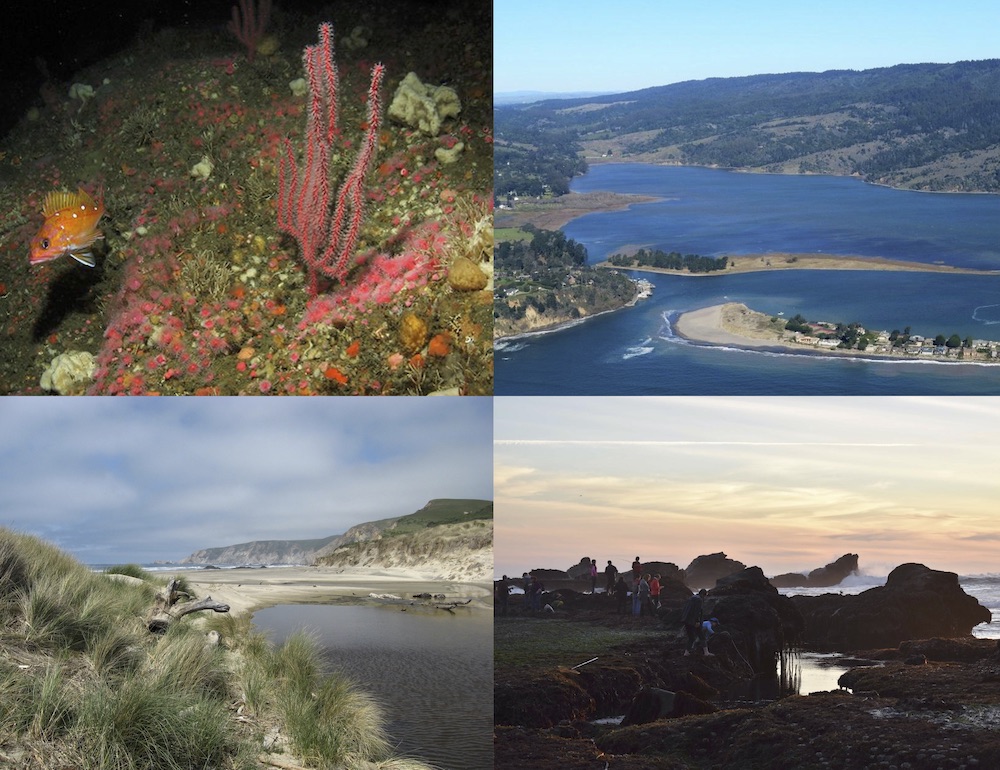Happy World Oceans Day!
The ocean is a climate superhero.
Seaweed and phytoplankton produce more than 50% of our world’s oxygen. Thank you ocean.
And the ocean needs our help, after all every great superhero needs a sidekick! Greater Farallones Association and Greater Farallones National Marine Sanctuary are working to protect and restore kelp forests along the northern California coastline through the Greater Farallones Kelp Recovery Program. Check out the Kelp Recovery Program Video!
(Photo Credit: Keith Johnson; Video Credit: Office of National Marine Sanctuaries)
The ocean is a biodiversity superhero.

More than 50% of all species on earth are found in the ocean. Thank you ocean.
And the ocean needs our help, after all every great superhero needs a sidekick! The Greater Farallones ocean research partnership, through the Applied California Current Ecosystem Studies (ACCESS), supports marine wildlife conservation and healthy marine ecosystems in northern and central California and informs resource managers, policy makers, and conservation partners through programs like the Seabird Protection Network. Together we can make responsible decisions about how to protect the ocean we all depend on.
(Photo Credits clockwise from shark: Peter Winch, Sophie Webb/NOAA, NOAA, Peter David/USFWS)
The ocean is a carbon storage superhero.

The ocean stores 50 times more carbon dioxide than our atmosphere through carbon sequestration. Thank you ocean.
And the ocean needs our help, after all every great superhero needs a sidekick! Greater Farallones Association and Greater Farallones National Marine Sanctuary engage the next generation of marine stewards through enriching education programs to learn about topics such as ocean acidification and plankton and increase environmental literacy.
(Photo Credits: Pacific Plankton and Maureen Sullivan)
The ocean is a habitat superhero.

The ocean supports life and livelihoods for wildlife and humans worldwide through its diverse ecosystems that wildlife and people depend on for shelter, sustenance, jobs, and joy. Thank you ocean.
And the ocean needs our help, after all every great superhero needs a sidekick! We monitor coastal ecosystems through community science programs, such as Beach Watch and LiMPETS, that engage student and adult volunteers to track the short-term and long-term changes within the sanctuary. These data inform Greater Farallones National Marine Sanctuary managers and community partners on how best to protect these important places.
(Photo Credits clockwise from coral: GFNMS, Bob Wilson/Lighthawk, Sara Heintzelman, Beach Watch/GFNMS)
And the ocean needs YOUR help, after all every great superhero needs a sidekick!

From individual and community actions to civic engagement, we can all contribute to protecting our ocean. Whether you choose a plastic free option on your next purchase, work with your community to organize a trash clean up, contact your representatives, or vote, everyone can make a difference.
What action do you pledge to take?
Let us know in the form below, or post your pledge to social media — tag yourself being a superhero for the ocean and let us know how your actions go!
Greater Farallones Association on Facebook @Farallones, Twitter @FarallonesNews and Instagram @FarallonesNews
Greater Farallones National Marine Sanctuary on Facebook @GFNMS and Twitter @GFNMS.
Don’t forget to use these hashtags!
#OceanSuperHero #ThankYouOcean #WorldOceanDay
Donate today to help us continue this critical work and ensure the ocean can continue to be a superhero for Planet Earth.
(Photo Credits clockwise from marine debris: Kate Bimrose, Sara Heintzelman, LiMPETS, Beach Watch/GFNMS)
What action do you pledge to take?
You can be an ocean hero too! What action do you plan to take on this World Oceans Day -- and everyday -- to help protect the ocean?

